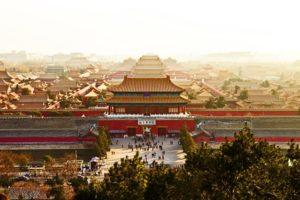Fodor's Expert Review White Clouds Taoist Temple
This lively Taoist temple founded in the 8th century serves as a center for China's only indigenous religion. Monks wearing blue-cotton coats and black-satin hats roam the grounds in silence. Thirty of them now live at the monastery, which also houses the official All-China Taoist Association. Visitors bow and burn incense to their favorite deities, wander the back gardens in search of a master of qigong (a series of exercises that involve slow movements and meditative breathing techniques), and rub the bellies of the temple's three monkey statues for good fortune.
In the first courtyard, under the span of an arched bridge, hang two large brass bells. Ringing them with a well-tossed coin is said to bring wealth. In the main courtyards, the Shrine Hall for Seven Perfect Beings is lined with meditation cushions and low desks. Nearby is a museum of Taoist history (explanations in Chinese). In the western courtyard, the temple's oldest structure is a shrine housing... READ MORE
This lively Taoist temple founded in the 8th century serves as a center for China's only indigenous religion. Monks wearing blue-cotton coats and black-satin hats roam the grounds in silence. Thirty of them now live at the monastery, which also houses the official All-China Taoist Association. Visitors bow and burn incense to their favorite deities, wander the back gardens in search of a master of qigong (a series of exercises that involve slow movements and meditative breathing techniques), and rub the bellies of the temple's three monkey statues for good fortune.
In the first courtyard, under the span of an arched bridge, hang two large brass bells. Ringing them with a well-tossed coin is said to bring wealth. In the main courtyards, the Shrine Hall for Seven Perfect Beings is lined with meditation cushions and low desks. Nearby is a museum of Taoist history (explanations in Chinese). In the western courtyard, the temple's oldest structure is a shrine housing the 60-Year Protector. Here the faithful locate the deity that corresponds to their birth year, bow to it, light incense, then scribble their names, or even a poem, on the wooden statue's red-cloth cloak as a reminder of their dedication. A trinket stall in the front courtyard sells pictures of each protector deity. Also in the west courtyard is a shrine to Taoist sage Wen Ceng, depicted in a 3-meter- (10-foot-) tall bronze statue just outside the shrine's main entrance. Students flock here to rub Wen Ceng's belly for good luck on their college entrance exams. The area around the temple is packed with fortune-tellers.
READ LESS







